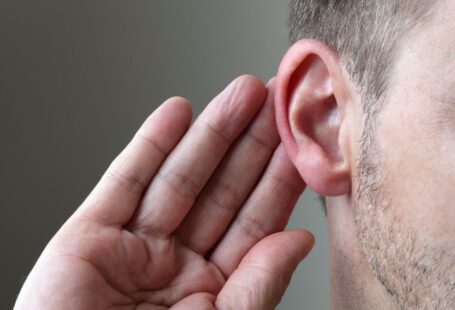
During its 2020-2021 term, the Supreme Court agreed to hear 62 cases – a seemingly large number until you consider the nearly 7,000 it rejected. So how do the less than .01 percent of cases make it to the Supreme Court docket? You may think it takes superior scholarship and a little luck…and you’d be right. But sometimes you might just need to give the Justices the exact type of case they ask for.
The Process
Usually, the Supreme Court hears cases that have been decided in either an appropriate U.S. Court of Appeals or the highest Court in a state. Parties petition the Supreme Court to hear a case if they are not satisfied with a lower court’s decision. According to the Department of Justice, the primary means to petition the Court for review is to ask it to grant a writ of certiorari, which is an order issued by the U.S. Supreme Court directing the lower court to transmit records for a case it will hear on appeal. The Supreme Court will hear a case if at least four of the nine Justices agree to grant the petition for certiorari. This is called the “Rule of Four.” If three or fewer agree to grant the petition, then the Court must decline to hear the case.
How Do Justices Choose Which Cases to Grant Certiorari?
Sometimes, Justices might be interested in settling splits on an issue among lower Circuit Courts. This way, if a number of courts reach different conclusions about a law, the Supreme Court can step in and interpret the law and set a precedent for all the courts. Other times, the Court hears cases when they feel that lower courts have disregarded or misapplied Supreme Court precedent and the Justices want to correct it. Justices also choose cases to resolve conflict between federal and state laws. Through published opinions, it’s also not uncommon for Justices to encourage or even invite certain cases.
Wait, the Court Can Ask for Cases?
Yes, in opinions and dissents. Consider the Court’s rejection of Small v. Memphis Light, Gas & Water in April 2021.
In 1977, the Supreme Court decision in Trans World Airlines, Inc. v. Hardison established the precedent that an employer does not need to provide a religious accommodation to an employee that involves undue hardship on the employer. The Supreme Court rejected the opportunity to challenge this 44-year-old precedent when it declined to hear the Small case this spring.
Jason Small had worked as an electrician for over a decade at Memphis Light, but suffered an injury on the job in early 2013 that required him to change roles. Memphis Light offered him another position, which Small accepted, but with concerns that the new position would conflict with the practice of his religion. Small told the company that he attends services on Wednesday evenings and Sundays and asked for a different position or shift. Memphis Light denied the request. Small remained in the new position and used his vacation days when necessary to attend church. Eventually, Small asked to use vacation time on Good Friday, and the company refused. When Small missed work anyway, the company suspended him for two days without pay.
In 2017, Small sued Memphis Light, Gas & Water for violating Title VII of the Civil Rights Act of 1964, which requires employers to grant requested religious accommodations unless doing so would impose an “undue hardship” on them. On the eve of the trial, the District Court granted Memphis Light summary judgment, and the Sixth Circuit affirmed.
While the Supreme Court ultimately rejected Small, Justices Neil Gorsuch and Samuel Alito later wrote an opinion dissenting from the denial of the case in which they not-so-subtly voiced their desire for a case to be brought to the Court that could overturn Hardison. In their opinion about the Court’s rejection of Small, in which they referred to Hardison multiple times, Gorsuch and Alito wrote, “There is no barrier to our review and no one else to blame. The only mistake here is of the Court’s own making – and it is past time for the Court to correct it.” Using the medium of a public dissent, Justices Gorsuch and Alito voiced their opinion disagreeing with the other Justices that denied certiorari and advocated for the Court to correct what they deemed to be a past mistake.
In another published opinion, Justices Alito, Thomas, and Gorsuch concurred in the denial of certiorari of a 2020 case, Patterson v. Walgreen Co. However, despite their concurrence, and similar to the Small dissent, the Justices referenced Hardison. Justice Alito wrote, “I agree in the end that this case does not present a good vehicle for revisiting Hardison, but I reiterate that review of the Hardison issue should be undertaken when a petition in an appropriate case comes before us.” Essentially, while the three Justices agreed that Patterson v. Walgreen Co. was not the correct case through which to examine the precedent set by Hardison, they still invited cases that would challenge Hardison to come before the Court as a more appropriate “vehicle.”
History of Using Dissents to Invite Cases
The published dissent in the Small case and the concurrence in the Patterson case in which the Justices encouraged litigants in other cases to come forward that would challenge Hardison is not all that unusual. Justices have used published dissents as a way to show what cases they are looking for as well as solicit future attempts to win the “Rule of Four” needed to accept a case. The use of this practice has varied under different Chief Justices. Publishing dissents to garner support for cases was common under Chief Justice Warren Burger; however, Chief Justice William Rehnquist disliked the practice. Under Chief Justice John Roberts, publishing dissents to identify issues and express hopes for future cases has made a return.
While the Supreme Court doesn’t exactly have slim pickings when deciding which cases merit certiorari, they can encourage cases that challenge or address specific precedents to at least try and claim a spot on the Court’s docket. Therefore, it wouldn’t be surprising for more cases that challenge Hardison to petition the Court until one is finally granted review. Any middle schooler should know that the judicial branch of government can only interpret laws – not enforce them. Even Alexander Hamilton once said that the Judiciary branch would be the weakest of the three branches of government because it had no influence. But the practice of using dissents and majority opinions to ask for certain cases? That sounds like influence.





